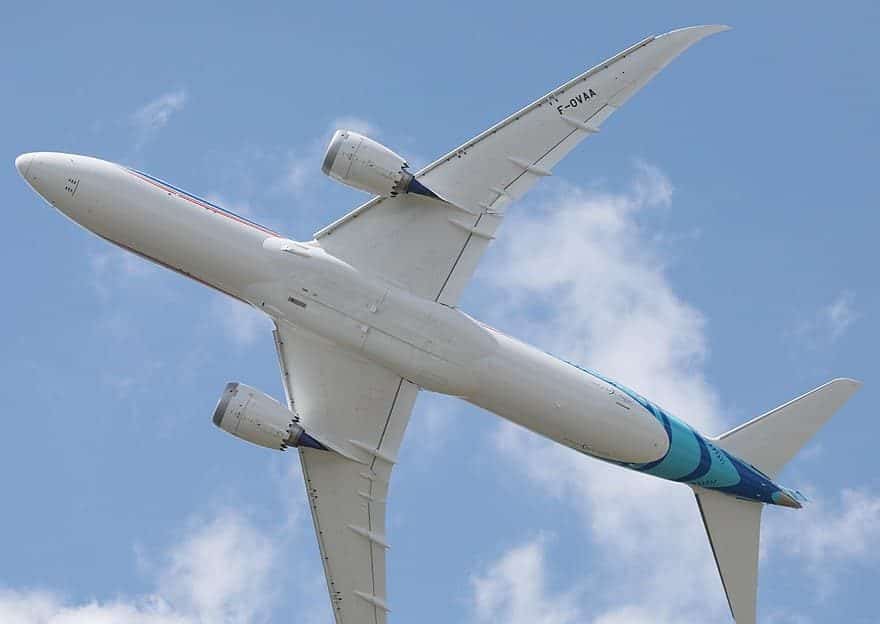Airlines
This Saudi Arabian airline may order 80 Boeing 787 planes.

His Royal Highness Crown Prince Mohammad bin Salman bin Abdulaziz, Prime Minister and Chairman of the Public Investment Fund (“PIF”), announced today the establishment of “Riyadh Air,” a PIF wholly owned company.
The new national carrier will leverage Saudi Arabia’s strategic geographic location between the three continents of Asia, Africa, and Europe, enabling Riyadh to become a gateway to the world and a global destination for transportation, trade, and tourism.
According to Reuters, Boeing is ready to enter into a contract with Saudi Arabia’s newly created Riyadh airlines, and it is also offering some discounts to airline operators in anticipation of significant future demand. Riyadh Airlines is planning to purchase roughly 80 wide-body aircraft from Boeing, all of which are B787 Dreamliner. According to certain sources, Airbus is also in the midst of finalizing the A350 agreement.
Saudi Airlines now plans to fly more than 100 destinations, which means it will require 30% narrow-body and 70% wide-body aircraft. However, no formal confirmation has been made. The trade might take place at the Paris Airshow in 2023. Boeing started delivering the Boeing 787 aircraft a few days later, as it began to focus on order backlogs and new order fulfilments.
Saudi Arabia announces plans for a six-runway hub airport in Riyadh.(Opens in a new browser tab)
Riyadh Air will be chaired by His Excellency Yasir Al-Rumayyan, Governor of PIF, while Tony Douglas, who brings more than 40 years of experience in the aviation, transportation, and logistics industries, has been appointed Chief Executive Officer. The airline’s senior management will include Saudi and international expertise.
Operating from Riyadh as its hub, the airline will usher in a new era for the travel and aviation industry globally. Riyadh Air will be a world-class airline, adopting the global best sustainability and safety standards across its advanced fleet of aircraft equipped with the latest cutting-edge technology.
The airline is expected to add USD20 billion to non-oil GDP growth and create more than 200,000 direct and indirect jobs.
As a wholly owned PIF subsidiary, the new national airline is set to benefit from PIF’s investment expertise and financial capabilities while expanding on the company’s operations to become a leading national carrier.
In Gesture To Israel, Saudi Arabia Opens Airspace To ‘All Carriers’.(Opens in a new browser tab)
The new national airline represents PIF’s latest investment in the sector, along with the recently announced King Salman International Airport masterplan.
Riyadh Air aims to enhance customers’ journeys while connecting them to over 100 destinations around the world by 2030; by offering an exceptional experience with authentic, warm Saudi hospitality at its heart.
The airline will provide tourists from around the world the opportunity to visit Saudi Arabia’s cultural and natural attractions. Riyadh Air will also serve as a catalyst for the Saudi National Transport and Logistics Strategy and the National Tourism Strategy by increasing air transport options, raising cargo capacity, and, in turn, growing international passenger traffic.
The establishment of Riyadh Air is part of PIF’s strategy to unlock the capabilities of promising sectors that can help drive the diversification of the local economy. It will enable a more financially resilient aviation ecosystem in Saudi Arabia, supporting the industry’s global competitiveness in line with Vision 2030.

Airlines
Air India’s last VVIP Boeing 747 now found a new home in USA

In a symbolic transition marking the end of a storied chapter in aviation history, Air India bid farewell to its last remaining Boeing 747-400 jumbo jetliners, once revered for ferrying dignitaries including prime ministers, presidents, and vice presidents.
The sale of these iconic aircraft to AerSale, a company based in the United States, signals the closure of a remarkable era for the airline.
The decision to part ways with the Boeing 747s was driven by practical considerations. Tata Group, the new custodian of airindia flights, deemed these majestic planes uneconomical to operate in today’s aviation landscape. As such, out of the four sold, two will be repurposed into freighters, while the remaining pair will be meticulously disassembled to harness their valuable parts.
The transaction, orchestrated by Mumbai-based Vman Aviation Services, underscores the strategic shift in Air India’s fleet management strategy under its new ownership. Tata Group’s decision to divest from the 747s reflects a commitment to optimizing operational efficiency and aligning with contemporary industry standards.
Skytech-AIC, a UK-based remarketing firm engaged by Tata Group, facilitated the sale of these iconic aircraft, marking the conclusion of their illustrious service with Air India. The airline’s last flight featuring the Boeing 747 took to the skies between Delhi and Mumbai in March 2021, encapsulating decades of distinguished service and indelible memories.
The allure of used aircraft parts continues to resonate across the aviation sector, offering operators a cost-effective alternative without compromising on quality or performance. The transfer of these aircraft to AerSale not only ensures their continued utility but also underscores the enduring legacy of Air India’s fleet.
Airlines
A software error caused grounding the entire airline fleet

On Wednesday, the U.S. Federal Aviation Administration (FAA) issued a ground stop advisory for all Alaska Airlines and subcarrier flights due to a software issue, disrupting travel plans for passengers.
The FAA directive, which prohibited the departure of Alaska Airlines mainline and subcarrier flights, was implemented as a precautionary measure following the detection of the software problem. The ground stop was initiated after Alaska Airlines encountered difficulties during a system upgrade related to the calculation of weight and balance for their flights.
As a result, the airline opted for a temporary suspension of all its operations to address the issue and ensure passenger safety. Alaska Airlines promptly issued a statement acknowledging the incident and expressing their commitment to resolving the matter swiftly. “This morning we experienced an issue while performing an upgrade to the system that calculates our weight and balance.
Out of an abundance of caution, we requested a ground stop for all Alaska and Horizon flights, which was instituted at approximately 7:30 a.m. PT,” the statement read. Passengers affected by the disruption voiced their concerns on social media platforms, prompting Alaska Airlines to reassure them of their efforts to minimize the inconvenience and expedite the resumption of flights.
Following approximately an hour-long interruption, the FAA lifted the ground stop order, allowing Alaska Airlines and its subcarriers to resume normal operations. However, it was clarified that SkyWest, which provides regional service for Alaska Airlines and other carriers, was exempt from the ground stop and continued its flights unaffected.
Aerospace
Which is bigger 777x or 787 aircraft ?

The 777X is a new series of the Boeing 777 family and is designed to be larger and more efficient than its predecessor. It features two variants: the 777-8 and the 777-9, being the larger of the two.
The Boeing 777X emerges as the larger sibling within the Boeing family, representing a significant leap forward in both size and efficiency. Comprising two variants, the 777-8 and the 777-9, the latter takes the crown as the larger of the two. With its expansive fuselage and impressive wingspan, the 777X is tailored for long-range journeys and boasts a substantial passenger capacity.
On the other hand, the Boeing 787, affectionately known as the Dreamliner, occupies a niche in the market as a smaller yet formidable aircraft designed for medium to long-range flights. Its distinguishing feature lies in its composite fuselage, a technological marvel that renders it lighter and more fuel-efficient compared to conventional aluminum counterparts. The Boeing 777X is larger than the Boeing 787 aircraft.
When it comes to passenger capacity, the 777-9 reigns supreme, typically accommodating a sizeable contingent of 400-425 passengers in its standard configuration. In contrast, the 787, with its more modest dimensions, typically carries between 240-290 passengers, depending on the variant and layout.
One of the remarkable innovations introduced with the 777X is its folding wingtips, a feature designed to address the logistical challenges of accommodating such a large aircraft in conventional airport gates. These folding wingtips enable the 777X to retract its wings, allowing it to fit into gates designed for smaller aircraft while still reaping the benefits of an extended wingspan during flight, thereby enhancing fuel efficiency and operational flexibility


























